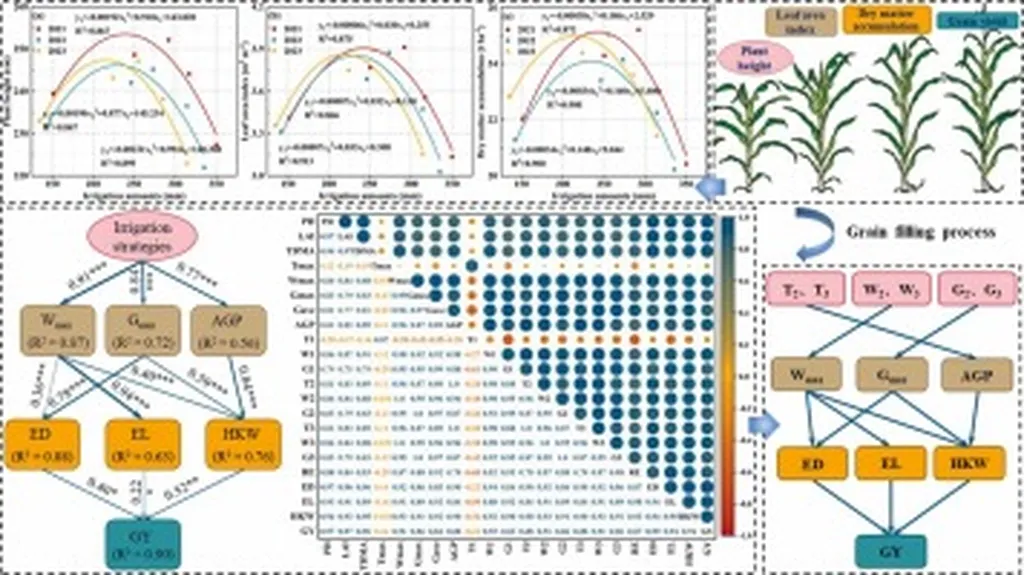In the heart of China’s Guanzhong Plain, a groundbreaking study led by Xiaodong Fan from the Key Laboratory of Agricultural Soil and Water Engineering in Arid and Semiarid Areas at Northwest A&F University is reshaping our understanding of deep storage irrigation and its impact on summer maize yields. This research, published in the journal ‘Agricultural Water Management’ (translated as ‘Agricultural Water Management’), offers a beacon of hope for regions grappling with water scarcity and overexploitation of groundwater.
The study, conducted over three years, delves into the mechanisms of deep storage irrigation—an innovative strategy that utilizes flood resources to address water shortages. “We aimed to identify how deep storage irrigation influences the growth and yield of summer maize,” explains Fan. The research explored various irrigation depths, from a control treatment of 80 cm to a maximum of 180 cm, with the soil saturation moisture content serving as the upper limit.
The findings are nothing short of transformative. Treatments of 120 cm, 140 cm, and 160 cm significantly boosted plant height, leaf area index, and total dry matter accumulation compared to the control. These treatments also enhanced kernel weight increment, achieving maximum grain filling rates and extending the active grain filling period. Consequently, ear diameter, ear length, and 100-kernel weight increased, leading to substantial yield improvements.
“Relative to the control, the 120 cm, 140 cm, and 160 cm treatments showed yield increases of 5.16%–15.73%, 4.77%–14.81%, and 4.79%–15.34%, respectively, over the three years,” Fan notes. However, the higher irrigation treatment of 180 cm exhibited negative effects, decreasing yield by 8.97% to 10.18%.
Structural equation modeling revealed that growth indicators directly influenced maize yield characteristics, while grain filling characteristics mediated this relationship. Deep storage irrigation improved ear diameter, ear length, and 100-kernel weight by positively regulating maximum grain filling rate, maximum grain filling rate, and active grain filling period, thus significantly increasing grain yield.
The study identified the optimal threshold for maximizing maize yields at the 140 cm treatment and the safety threshold for maximizing flood resources utilization at the 160 cm treatment. These thresholds maintained relative stability in wet and normal seasons, while short-term waterlogging stress induced by the 180 cm treatment significantly decreased grain yield.
This research provides valuable insights for balancing and coordinating food security and water security under future conditions. As water resources become increasingly scarce, the findings offer a roadmap for sustainable agricultural practices that can enhance crop yields while conserving water. The implications for the energy sector are profound, as efficient water management can reduce the energy demands of irrigation, contributing to a more sustainable and resilient future.
Fan’s work underscores the importance of innovative irrigation strategies in addressing global water challenges. As the world grapples with climate change and resource depletion, this research offers a glimmer of hope, demonstrating that with the right strategies, we can achieve both food and water security.

